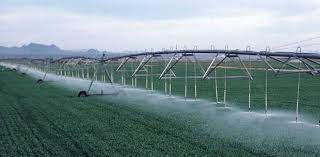- As the subject matters of water and agriculture falls under the State List of Seventh Schedule under Constitution of India, measures for increasing irrigation efficiency are primarily taken by respective State Governments.
- The Central Government has been supplementing the efforts of the State Governments by providing technical and financial assistance through various schemes and programmes.
The measures for increasing irrigation efficiency to conserve water taken at Government of India level are as:
- At the Ministry of Jal Shakti level
- Modernization of Command Area Development and Water Management (CADWM) component of Pradhan Mantri Krishi Sinchayee Yojana (PMKSY) is targeted for enhancing agriculture productivity and water use efficiency.
- The scheme also envisages transforming the existing command (whether rain fed, or gravity based) to a Pressurized Piped Irrigation Command (PPIC) by providing pressurized irrigation water from Established source to Farm Gate below Minor (Tertiary) Level Network and this will target increase in the water use efficiency upto 90% at farm level ready with robust back-end infrastructure using Surface Water
- At Policy level
- The National Water Policy, 2012 has recognized the importance of water use efficiency and has inter-alia made many recommendations in this regard, including
- bringing in maximum efficiency in use of water and avoiding wastages;
- use of economic incentives and penalties to reduce pollution and wastage;
- setting up independent statutory Water Regulatory Authority by each State after wide ranging consultation with all stakeholders for equitable access to water for all and its fair pricing, for drinking and other uses such as sanitation, agricultural and industrial;
- water charges be determined on volumetric basis; and (E) obligation on Industries in water short regions to return treated effluent to a specified standard back to the hydrologic system.
- The Somasila Project was constructed across river Pennar near Somasila Village of Anantha Sagaram Mandal in S.P.S.R. Nellore District with a Gross storage capacity of 78.00 TMC at FRL +100.58 Mts (+330 Ft). River Pennar originates on the slope of Nandi hills in Karnataka State, and the basin of Pennar River is fed by a number of tributaries viz Cheyyeru, Papagni, Chitravathy, Kundu and Sagileru.
- The foundation stone for this project was laid on 04.06.1975 by the then Hon’ble Chief Minister of Andhra Pradesh Sri Jalagam Vengal Rao garu.
- Matatila is situated at left bank of river Betwa which rises from Bhopal in the Vindhyan Plateau at an elevation of 1550ft, passes through granite rocks at a sleep gradient, the river flows on the outskirts of district Jhansi forms the boundary line of U.P. and M. P and thereafter it mostly flows in U.P., meeting the river Yamuna in Hamirpur Distt in U.P.
- It is entirely a rain fed river with very high discharge of water during the rainy season and extremely low discharge during summers.
- The dam was constructed in 1957 for irrigation purposes. Matatila Powerhouse with three machines of 10.2 MW each on the existing Dam was commissioned in1965.
- Sri Rama Sagar Project (SRSP) Reservoir is located across the Godavari River near Pochampad (v) in Nizamabad District is a Multipurpose Irrigation Project. The foundation stone of this project was laid on 26th July 1963 by the then Prime Minister of India late Sri Pandit Jawaharlal Nehru.
- The National Water Policy, 2012 has recognized the importance of water use efficiency and has inter-alia made many recommendations in this regard, including

